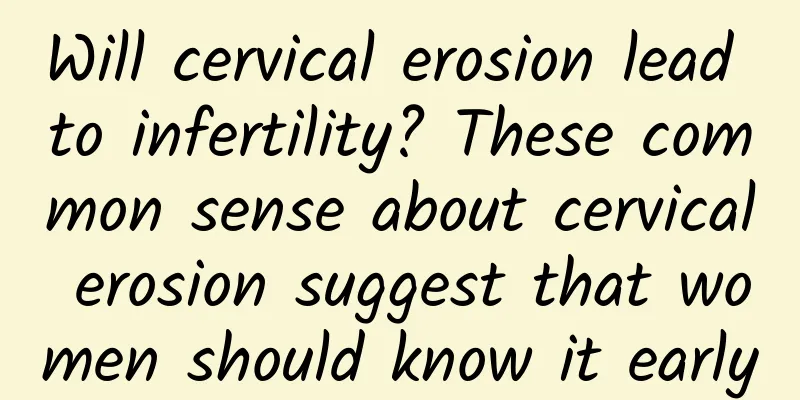Will cervical erosion lead to infertility? These common sense about cervical erosion suggest that women should know it early

|
Some patients with cervical erosion may be caused by endocrine dysfunction, which also affects the reproductive function to varying degrees and causes infertility. Therefore, in general, the fertility of people with cervical erosion is definitely lower than that of normal people. Cervical erosion is a type of inflammation of the deep tissues of the cervix. The cervix is the passage from the vagina to the uterus. Under normal circumstances, it secretes viscous secretions and plugs the cervical opening in the form of a plug to prevent pathogens from invading the uterine cavity. When the body's resistance decreases or the cervix is affected by physical, chemical, and biological factors, the secretions increase; the cervix is often immersed in the secretions, which is susceptible to the invasion of pathogens and causes infection, causing cervicitis. Cervical erosion is a manifestation of chronic cervicitis. It often occurs after puerperal infection and local damage due to delivery, abortion, or surgical operation, and often coexists with vaginitis. In addition, endocrine disorders are also one of the causes of the disease. Chronic cervicitis is the most common gynecological disease, accounting for more than 59% of married women. Cervical erosion is the most common local manifestation of chronic cervicitis. Patients mainly present with increased and sticky discharge, sometimes purulent, and occasionally bloody; they may also have backache, abdominal pain, and a feeling of falling. Local examinations show varying degrees of cervical erosion, which can sometimes coexist with cervical polyps and cysts. The physical and chemical properties of the cervical viscosity of patients with cervical erosion have changed to a certain extent. The mucus contains more autologous cells and different types of bacteria, which can cause some sperm passing through the cervix to be engulfed and destroyed, and the energy of the sperm is consumed, which reduces the sperm motility and shortens the survival time. Among them, Escherichia coli has a strong agglutination effect on sperm, and others such as hemolytic streptococci and grass-green streptococci also have a strong sperm-killing effect, which has a certain impact on reproductive ability. As mentioned above, some patients with cervical erosion may be caused by endocrine dysfunction, which also affects the reproductive function to varying degrees and causes infertility. Therefore, in general, the fertility of people with cervical erosion is definitely lower than that of normal people, but for a certain individual, whether cervical erosion can be the main cause of infertility depends on the specific circumstances. |
<<: How do women get cervical erosion? Analysis of the six major causes of cervical erosion in women
Recommend
Recommendations for the treatment of menopausal uterine fibroids
Menopausal uterine fibroids are a common disease ...
Indications for myomectomy Dietary conditioning methods for myomectomy
The uterus is cut open, the myoma is removed from...
How to prevent acute adnexitis?
What is needed to prevent acute adnexitis? This i...
How is pelvic inflammatory disease caused?
Pelvic inflammatory disease is a common scientifi...
Hyperprolactinemia surgical cure rate
How high is the cure rate of hyperprolactinemia s...
What harm does acute adnexitis do to women?
Some women do not seek timely treatment after the...
Where is the pelvic fluid drained? What should be paid attention to?
In clinical practice, there are many ways to trea...
Experts reveal the causes of secondary dysmenorrhea in women
As dysmenorrhea becomes a more and more common di...
Can endometriosis be inherited?
Is endometriosis hereditary? Endometriosis is a c...
The prevention and treatment of ectopic pregnancy needs to be paid attention to
Patients with ectopic pregnancy all know that the...
What are the treatments for female adnexitis?
What are the treatments for female adnexitis? Adn...
Can pressing the hunger-stopping points help you lose weight? Chinese medicine doctor: Press these two ear points to lose weight easily
The main cause of obesity is mostly related to &q...
How to cure dysmenorrhea?
How to cure dysmenorrhea? The occurrence of dysme...
How to effectively prevent ovarian cysts?
How to effectively prevent ovarian cysts? Ovarian...
For pregnant women, which one is more harmful, natural abortion or medical abortion?
Spontaneous abortion mainly refers to heavy bleed...









